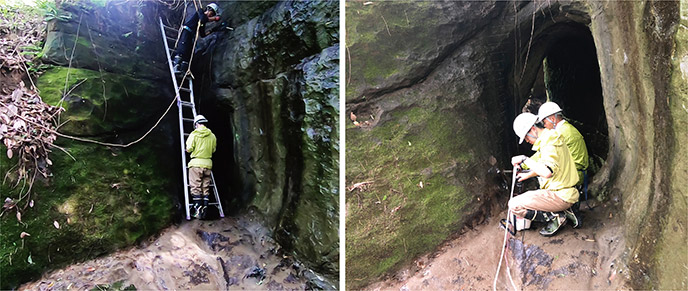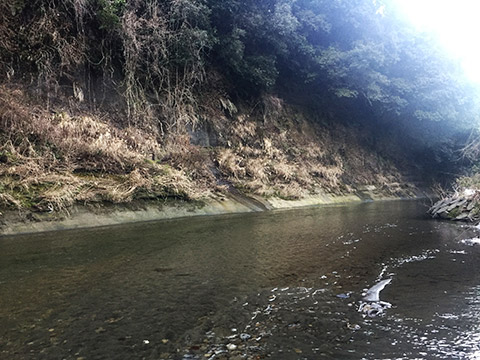National Institute of Polar Research
Researchers provide most detailed and complete record yet of Earth's last magnetic reversal
Released on September 2, 2020 (in Japanese)
Posted on October 22, 2020
Earth’s magnetic fields typically switch every 200 to 300 millennia. Yet, the planet has remained steady for more than twice that now, with the last magnetic reversal occurring about 773,000 years ago. A team of researchers based in Japan now has a better understanding of the geophysical events leading up to the switch and how Earth has responded since then.
They published their results on September 1in the Progress in Earth and Planetary Science, a Springer journal.
Named for the geophysicists who discovered past geomagnetic reversals, the Matuyama-Brunhes geomagnetic reversal is one of the most studied paleomagnetic events, according to paper author Yuki Haneda, project researcher at the National Institute of Polar Research (NIPR) and a postdoctoral research fellow at the National Institute of Advanced Industrial Science and Technology (AIST) in Japan. Such reversals swap the magnetic poles of the planet, which could have implications for plant and animal life. Such extrapolation to life, including humans and our ancestors, depends on the duration of the magnetic flip.
Previous studies by other researchers examined samples taken from lava flows, which offer a good snapshot of moments in geophysical history, according to Haneda.
“However, lava sequences cannot provide continuous paleomagnetic records due to the nature of sporadic eruptions,” Haneda said.
A series of studies based out of Italy suggested that the magnetic reversal took place within a single century — a blink on the scale of hundreds of thousands of millennia.
“In this study, we collected new samples and conducted paleo- and rock-magnetic analyses of samples from the Chiba composite section, a continuous and expanded marine succession in Central Japan, to reconstruct the full sequence of the Matuyama-Brunhes geomagnetic reversal,” Haneda said. The Chiba composite section is widely considered to contain the most detailed marine sedimentary record of the Matuyama-Brunhes geomagnetic reversal, according to Haneda, and serves as the international standard for lower boundary of the Middle Pleistocene Subseries and Chibanian Stage — when Homo sapiens emerged as a species.

Yuki Haneda (left, top) and colleagues collected samples from the Chiba composite section, a continuous and expanded marine succession in Central Japan. Credit: NIPR/AIST/Ibaraki University.
The researchers found that the geomagnetic field became unstable at least 10,000 years prior to the magnetic direction change 773,000 years ago, and the full reversal process took at least 20,000 years.
“Our data is one of the most detailed paleomagnetic record during the Matuyama-Brunhes geomagnetic reversal, offering deep insight into the mechanism of the geomagnetic reversal,” Haneda said.

Yoro River section, one of Chiba composite section. It is the upper part of the stratum. Credit: NIPR/AIST/Ibaraki University
Next, the researchers will investigate how the geomagnetic reversal influenced plankton and plants, using marine microfossil and pollen data found in their samples.
This work was supported by Tabuchi district of Ichihara City, Chiba Prefecture, the Agency for Cultural Affairs and the Ministry of Education, Culture, Sports, Science and Technology.
Other contributors include Makota Okada and Takahiro Kitamura, both of whom are affiliated with the Department of Earth Sciences at Ibaraki University, and Yusuke Suganuma, who is affiliated with the National Institute of Polar Research and the Department of Polar Science in the School of Multidisciplinary Sciences in the Graduate University for Advanced Studies, SOKENDAI.
Original article:
Journal: Progress in Earth and Planetary Science
Title: A full sequence of the Matuyama–Brunhes geomagnetic reversal in the Chiba composite section, Central Japan
Authors:
Yuki Haneda (NIPR/Ibaraki University/AIST)
Makoto Okada(Ibaraki University)
Yusuke Suganuma(NIPR/SOKENDAI)
Takahiro Kitamura(Ibaraki University)
DOI: 10.1186/s40645-020-00354-y
URL: https://progearthplanetsci.springeropen.com/articles/10.1186/s40645-020-00354-y
First Published: September 1, 2020
Funding:
This study was supported by a JSPS KAKENHI grant (16H04068, 17H06321, and 19H00710), a NIPR Advanced Project (KP-7 and KP301), and a Geoscience Research Grant from the Tokyo Geographical Society.








